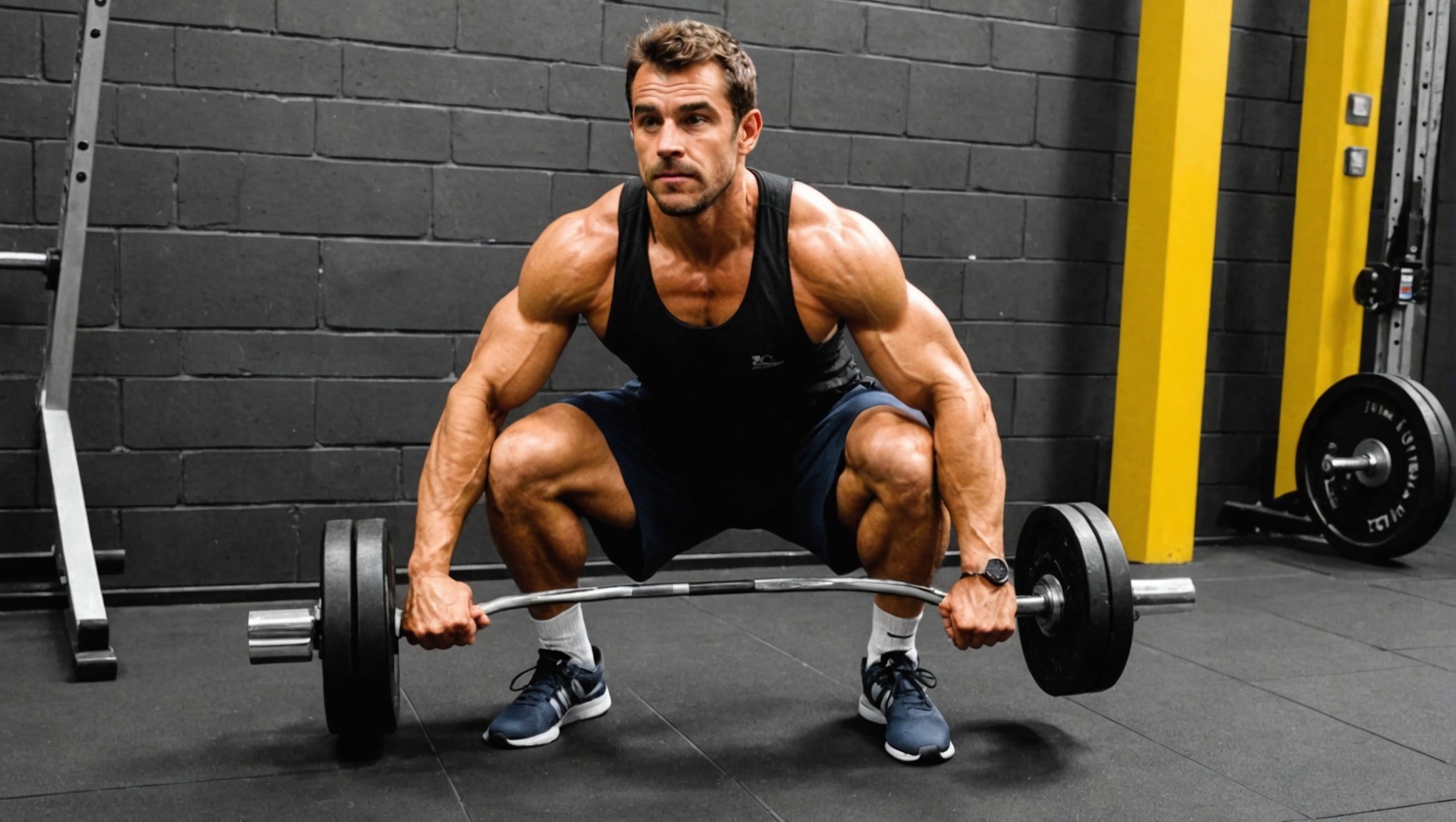Imagine you’re at the gym, ready to conquer a new personal record in your squats. You’re focused, your form is excellent, but as you descend into the squat, you feel a strain in your ankles and knees. Suddenly, that goal seems unachievable. The culprit? Limited ankle mobility.
Ankle mobility is often overlooked but is a critical factor affecting your squat performance. It isn’t just about the strength of your legs or core. Your ankle joint plays a significant role in allowing a full range of motion and achieving optimal squat depth. Therefore, incorporating exercises aimed at improving ankle mobility can result in considerable enhancements in your overall squat performance.
Additional reading : Can specific yoga stretches immediately post-lifting increase muscle hypertrophy?
The Influence of Ankle Mobility on Squats
Let’s dive deeper into the role of ankle mobility in squats. As you lower your body into a squat position, your ankles need to dorsiflex, a movement that brings your foot closer to your shin. This dorsiflexion allows your knees to move forward past your toes, letting you maintain a balanced and upright position.
Inadequate ankle mobility can limit this dorsiflexion, resulting in your heels lifting off the ground or your torso leaning excessively forward. Not only does this impact your squat depth, but it also puts significant strain on your knees and lower back.
In the same genre : What are the detailed strategies for peak week preparation in bodybuilding?
By improving ankle mobility, you increase your ankles’ range of movement, facilitating a deeper, more effective squat, without undue stress on your knees or lower back.
Importance of Ankle Strength in Squatting
Ankle strength is another vital aspect of effective squatting, which is often undervalued. A strong ankle improves stability and balance during the squat movement. This strength is essential, especially during high-intensity or weight-loaded squats.
Moreover, a strong ankle can better withstand the pressure exerted during dorsiflexion, minimizing the risk of injury. By incorporating exercises that target ankle strength, you can enhance your squat performance and safeguard your joints against potential damage.
Exercises to Improve Ankle Mobility and Strength
So how exactly do you improve ankle mobility and strength? Here are a number of exercises designed to target these areas, improving your overall squat performance:
-
Ankle Circles: This simple exercise helps improve your ankle’s range of motion. Sit with your legs extended in front of you. Lift one foot off the ground and slowly make circles with your foot, mobilizing the ankle joint.
-
Calf Raises: This exercise targets your calf muscles, which play a significant role in ankle strength and stability. Stand with your feet hip-width apart. Slowly raise your heels off the ground, putting your weight on the balls of your feet. Lower down slowly.
-
Heel Drops: A great exercise for improving dorsiflexion. Stand with the balls of your feet on an elevated surface (like a step). Let your heels drop below the step, then push back up.
-
Wall Stretch: This stretch improves both ankle mobility and calf strength. Stand facing a wall with one foot forward, heel grounded, and knee bent. Lean into the wall until you feel a stretch in your ankle and calf.
Integrating Ankle Mobility Exercises into Your Routine
Understanding the importance of ankle mobility and strength is one thing, but integrating these exercises into your workout routine is another. It doesn’t have to be complicated. You can include these exercises as part of your warm-up or cool-down routine.
Also, remember that consistency is crucial. Just as you wouldn’t expect your squat performance to improve after one session, the same goes for ankle mobility and strength. Regular, consistent practice of these exercises will yield the best results.
In conclusion, don’t let limited ankle mobility hinder your squat performance. By incorporating ankle mobility and strength exercises into your routine, you can achieve a deeper squat, reduce strain on your knees and lower back, and improve your overall squat performance.
Ankle Dorsiflexion and Range of Motion in Squats
The ankle joint’s ability to dorsiflex plays a crucial role in achieving the ideal squat depth. Ankle dorsiflexion refers to the foot’s movement towards the shin. In squats, this motion allows your knees to move forward beyond your toes, helping maintain an upright and balanced posture.
Poor ankle dorsiflexion range can lead to limitations in achieving the full depth of a squat. Limited ankle mobility forces your heels to lift off the ground or your body to lean excessively forward to compensate. This not only reduces your squat depth but also places significant strain on your knees and lower back.
Regularly performing mobility exercises focusing on ankle dorsiflexion can improve your range of motion. Physical therapy professionals often recommend the wall stretch—an exercise that not only improves ankle mobility but also strengthens the calf muscles. It involves standing facing a wall with one foot forward, the heel grounded, and the knee bent. You then lean into the wall until you feel a stretch in your ankle and calf.
Lower Extremity and Soft Tissue Impact on Squat Performance
While the main focus of this article is ankle mobility, it’s worth mentioning the role of the entire lower extremity—particularly the hips—in squat performance. Hip mobility significantly affects your ability to maintain a correct squat posture, just like ankle mobility.
The combination of hip flexion, the action of bending at the hips, and ankle dorsiflexion facilitates a deep squat position without excessive strain on the lower back. Therefore, adding hip mobility exercises to your routine can complement the benefits of improving ankle mobility.
Furthermore, soft tissue around the ankle joint can affect mobility. Tight calf muscles, for instance, may limit dorsiflexion range. Therefore, along with ankle mobility exercises, consider incorporating soft tissue work, like foam rolling or massage, to loosen up any tight muscles.
Conclusion
In summary, ankle mobility, particularly the dorsiflexion range, is a significant factor in achieving optimal squat performance. Limited ankle mobility can cause compensations that negatively impact squat depth and put unnecessary strain on the lower body. Incorporating ankle and hip mobility exercises, as well as soft tissue work, into your workout routine can help improve your squat depth and overall performance.
It’s also important to remember the role of lower extremity and soft tissue health in squat performance. By focusing on the entire lower body, from the hips to the ankles, and maintaining the health of your soft tissue, you can further enhance your squat performance.
So, don’t let poor ankle mobility hold you back from achieving your squat goals. Start incorporating these exercises into your routine consistently, and you will surely notice a difference in your form, stability, and depth of your squats. Remember, the journey to improve ankle mobility and strength is not an overnight trip, but a continuous process that requires regular effort.










